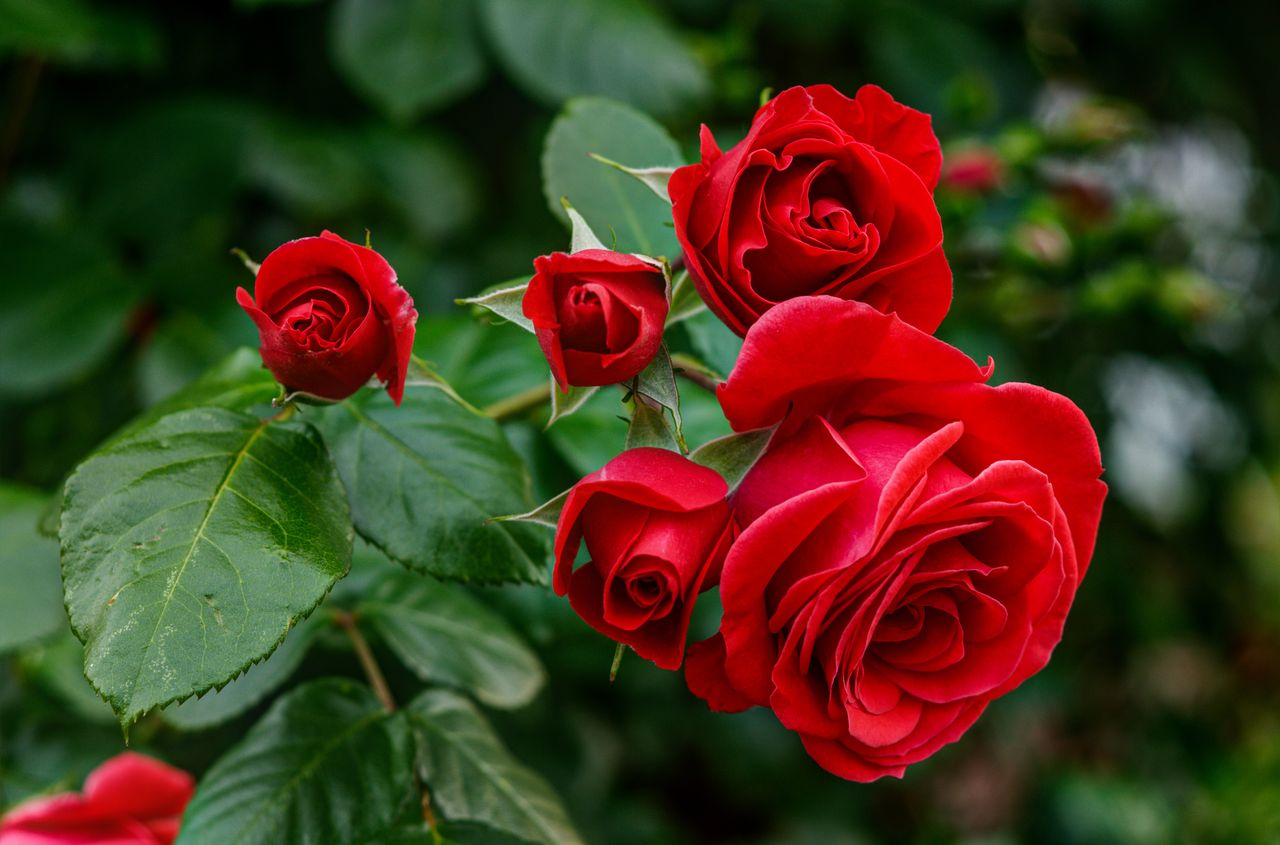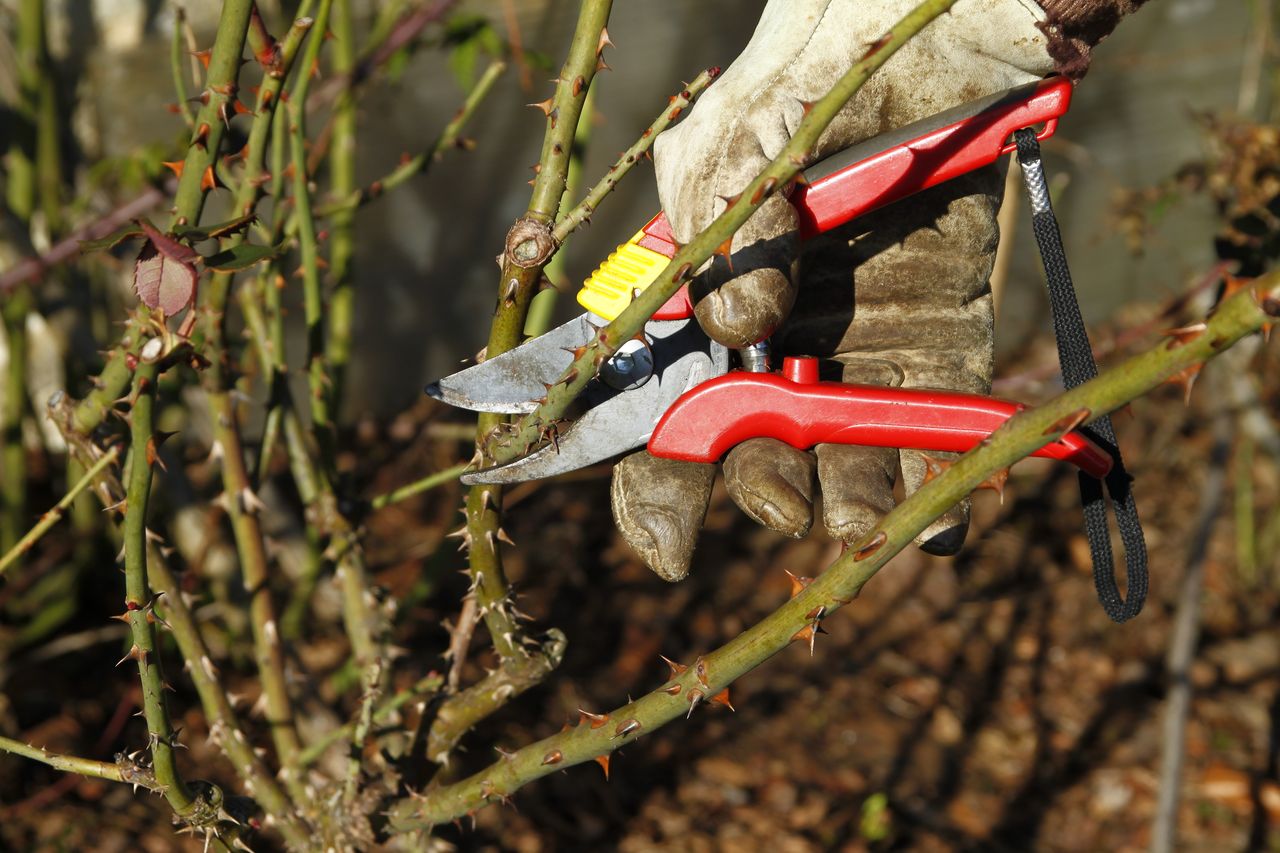Roses are ornamental plants appreciated for their beauty and fragrance.
Although they are relatively easy to care for, regular pruning is essential to maintain their health and beauty, because proper pruning allows the roses to form new shoots and prevent diseases and parasites.
Here are some important tips on when and how to prune your roses so you can enjoy their blooms.

Why is it important to prune roses?
It is important to prune the roses, because this is how they can also be pruned:
LEE: Planting Peonies: The Secrets of Successfully Growing and Caring for Peonies in Your Garden
- Grow better and produce more flowers.
- It promotes the circulation of sap in the tree and stimulates the growth of new branches.
- We distribute the power of the tree better and achieve a more abundant flowering.
- To prevent the roses from overgrowing and becoming uncontrollable.
When is it recommended to prune roses?

It is recommended to prune the roses in the spring when they start to grow again so that they grow quickly and produce more flowers.
It is important not to prune too late, as the frost can damage the plants. The roses should be cut about 15 cm above the ground.
The branches should then be slightly inclined to promote air circulation and avoid waterlogging.
Finally, it is important to remove dead or diseased branches to prevent the spread of disease.
Pruning climbing roses
Recurring climbing roses are great for blooming abundantly and regularly. Pruning is the surest way to get a healthy and vigorous plant that produces beautiful flowers.
The pruning of climbing roses begins with the end of the main branches, which are held to 5 or 6 eyes, the side shoots should also be reduced to 5-6 eyes (i.e. 30-40 cm), the roots should be shortened to 20-25 cm and damaged parts should be removed.
In order for the climbing roses to bloom abundantly and regularly throughout the year, it is important to prune them properly, starting at the end of the main branches and ending with the side shoots and roots.
By following these steps, you will have a healthy, vigorous plant that is sure to flower abundantly and regularly.
Pruning shrub roses
In the case of standard roses and shrubs, the most important thing is to ensure that they retain a limited number of main branches (between 3 and 7).
Pruning promotes the growth of young shoots and pruns the existing woody branches. Therefore, it is advisable to cut 3 to 5 eyes, i.e. at an average distance of 15 to 20 cm from the grafting site.
Another important consideration is to open up the center of the shrub so that air and light can circulate better.
Pruning non-climbing climbing roses
Pruning non-climbing climbing roses is an important measure for gardeners who want to preserve their rose bushes.
When pruning, 6 to 7 main branches are kept and all other side branches are folded to 2 eyes to enhance flowering.
Pruning non-climbing climbing roses is a process that requires careful attention and regular practice.
Choose the right time to prune to avoid damaging or cutting off living parts.
Please note that these roses are pruned immediately after the end of the flowering period, usually towards the end of August.
What tools should I use?
To ensure that you benefit from the best quality of roses, it is important that you equip yourself with the right tools.
- Quality pruning shears and well-sharpened pruning shears are essential, as are pruning shears or a large, old carpenter’s saw.
- A pair of gloves specifically for roses, or failing that, a pair that covers the forearms. This is necessary to protect yourself from the thorns.
- A bottle of methyl alcohol and a cloth are needed to disinfect the blades of the tools between each rose bush to prevent possible transmission of disease.
This step is very important and makes it possible to obtain an optimal quality of the flowers.
What do you do with cut branches?
The cut branches of rose bushes can be used as compost. They can be decomposed and used as a natural fertilizer for roses or other plants.
To make compost, the cut branches are placed in a pile, along with other organic matter such as leaves, grass clippings or kitchen scraps, which should be watered and turned regularly so that the different materials decompose well.
The compost is ready to use when it is dark brown and smells earthy.
Are there things to avoid when pruning roses?
When pruning rose bushes, there are a number of mistakes to avoid:
- Prune too early or too late: It is important to prune roses at the right time. Most experts recommend pruning roses in late winter or early spring, just before new growth forms. If you prune too early, you risk damaging live branches that are still fragile after winter. If you prune too late, you risk cutting off the buds that will produce flowers.
- Use non-clean and sharp tools: Use clean and sharp tools for rose pruning. Dirty or dull tools can damage branches and spread disease.
- Branches cut too short or too long : When pruning a rose bush, it is important to cut the branches to the right length. If you cut too short, you risk affecting the future growth of the plant. If you cut too short, you risk damaging the buds that will produce the flowers.
- Do not remove dead or diseased branches: Before pruning a rose bush, you should inspect the plant for dead or diseased branches; if you don’t remove them, they can spread diseases to other parts of the plant.
- Prune all roses the same way: Not all roses are created equal, and some require a different pruning. For example, climbing roses should be pruned differently than shrub roses. It is important to understand the specifics of each rose variety before pruning.
Avoiding these common mistakes can help your rose bush grow and bloom fully.
Now you have all the information you need to prune your roses!

